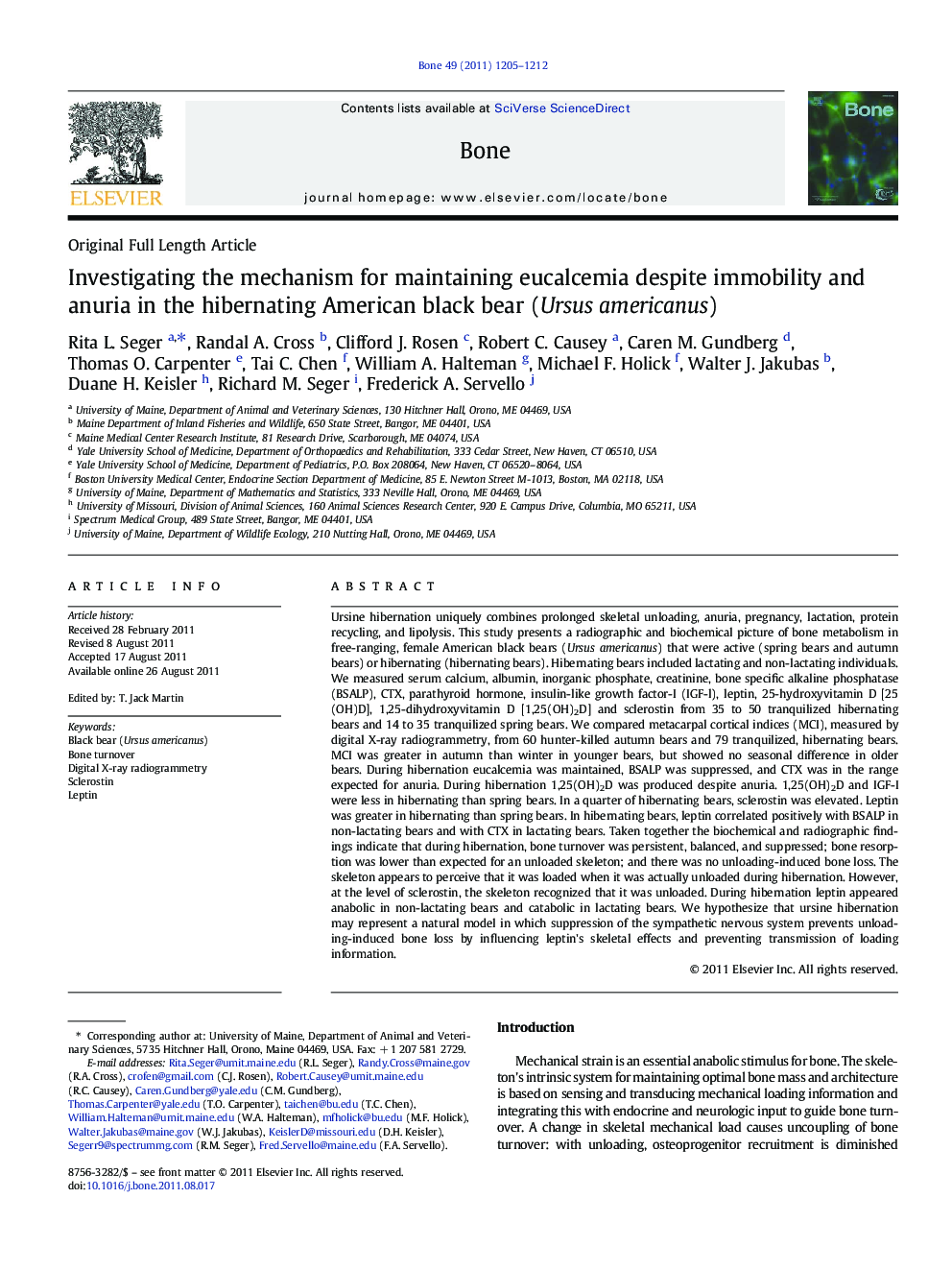| Article ID | Journal | Published Year | Pages | File Type |
|---|---|---|---|---|
| 5891539 | Bone | 2011 | 8 Pages |
Ursine hibernation uniquely combines prolonged skeletal unloading, anuria, pregnancy, lactation, protein recycling, and lipolysis. This study presents a radiographic and biochemical picture of bone metabolism in free-ranging, female American black bears (Ursus americanus) that were active (spring bears and autumn bears) or hibernating (hibernating bears). Hibernating bears included lactating and non-lactating individuals. We measured serum calcium, albumin, inorganic phosphate, creatinine, bone specific alkaline phosphatase (BSALP), CTX, parathyroid hormone, insulin-like growth factor-I (IGF-l), leptin, 25-hydroxyvitamin D [25(OH)D], 1,25-dihydroxyvitamin D [1,25(OH)2D] and sclerostin from 35 to 50 tranquilized hibernating bears and 14 to 35 tranquilized spring bears. We compared metacarpal cortical indices (MCI), measured by digital X-ray radiogrammetry, from 60 hunter-killed autumn bears and 79 tranquilized, hibernating bears. MCI was greater in autumn than winter in younger bears, but showed no seasonal difference in older bears. During hibernation eucalcemia was maintained, BSALP was suppressed, and CTX was in the range expected for anuria. During hibernation 1,25(OH)2D was produced despite anuria. 1,25(OH)2D and IGF-I were less in hibernating than spring bears. In a quarter of hibernating bears, sclerostin was elevated. Leptin was greater in hibernating than spring bears. In hibernating bears, leptin correlated positively with BSALP in non-lactating bears and with CTX in lactating bears. Taken together the biochemical and radiographic findings indicate that during hibernation, bone turnover was persistent, balanced, and suppressed; bone resorption was lower than expected for an unloaded skeleton; and there was no unloading-induced bone loss. The skeleton appears to perceive that it was loaded when it was actually unloaded during hibernation. However, at the level of sclerostin, the skeleton recognized that it was unloaded. During hibernation leptin appeared anabolic in non-lactating bears and catabolic in lactating bears. We hypothesize that ursine hibernation may represent a natural model in which suppression of the sympathetic nervous system prevents unloading-induced bone loss by influencing leptin's skeletal effects and preventing transmission of loading information.
⺠The hibernating bear is the only animal known to remain eucalcemic in the setting of mechanical unloading and anuria. ⺠During ursine hibernation, bone turnover was persistent, balanced and suppressed and there was no unloading-induced bone loss. ⺠At the level of sclerostin, the ursine skeleton recognized that it was unloaded during hibernation. ⺠In hibernating bears, leptin appeared anabolic in non-lactating bears and catabolic in lactating bears. ⺠We hypothesize that sympathetic nervous system suppression prevents unloading-induced bone loss during ursine hibernation.
